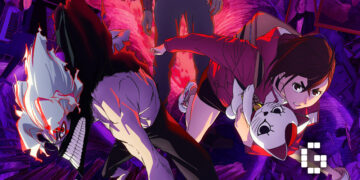It’s already known that NVIDIA has plenty of technologies to help even mid-range GPUs run like they were made of Tensor gold to play the latest and most demanding triple-A games. But what about for those of us whose favorite games already came out years ago?
Updating your GeForce Driver will introduce you to the newest in NVIDIA’s bag of tricks- Deep Learning Dynamic Super Resolution (DLDSR) for your RTX series GPU. The idea is simple- if your game isn’t the type to push a GPU to its limits, you’ll have a lot of computing power left over. With DLDSR, NVIDIA’s deep learning AI can use some of that excess power to help figure out how to give your game a visual boost- even if the game didn’t have it to start with.
What Is DLDSR?
Think about it like this- have you ever submitted your essay for class, then after the fact thought to yourself “well, I could have done that differently, couldn’t I?”. DLDSR is sort of like a free chance to make that edit- albeit without the academic implications.
With NVIDIA’s own deep learning AI, your machine can now figure out how to give your older games that extra coat of paint to look and run great. Looking a little smudgy? DLDSR can take that 1080p game and make it look like it was rendered at 4K. Textures looking a little aged? With downsampling you could theoretically have your game look like it was getting that HD Remaster treatment.
They’re not going to be massively large differences- don’t expect your copy of Dark Souls 1 to suddenly turn into Elden Ring- but they will be noticeable enough that if you had to turn it off you’d feel like a good orchestra missing its trombone.
Improving on DSR
Of course, getting your older games looking great isn’t a new venture for NVIDIA. DLDSR is itself an improvement over NVIDIA’s own Dynamic Super Resolution (DSR) technology. While that offered similar output, it came at a price- Using it at its 4x setting often incurred a bite out of your actual game’s performance, seeing lowered framerates.
Thankfully, thanks to the advanced AI power DLDSR, you won’t have to worry about that: Even just using 2.25x on DLDSR gets you the same results as 4x DSR, but making sure you still enjoy the high framerate afforded to you by NVIDIA’s top-of-the-line GPUs.

Just take a look at it in action in Arkham Knight- in the background, you can see the plates look much more solid in the second and third images, thanks to the AI’s ability to parse the lines of the plates from the wall.
Similarly, the fibres of the characters jacket are way more pronounced in the 2.25x version, looking overall much sharper than the baseline counterpart while still sporting a near-perfect framerate as compared to the 5fps drop on the 4x DSR on the side.

It’s not just for backgrounds either- in our test for 2020’s Hitman, you can see how well DLDSR works for rendering characters as well. With DLDSR and DSR you can see so much more of Agent 47’s details- his face looks like a human face, not breakfast yoghurt after you accidentally put your phone on it. Even the details in his clothes- the folds of his pants, etc- they all look sharp enough to be recognizable, meaning they’ll look great on any display.
On top of that, just like with Arkham Knight you can see that the 2.25x DLDSR runs at a much better framerate- the jump from 89 to 90fps is barely existent, compared to the much more noticable 85-90 you’d be running with the 4x.
#YesFilters
Of course, it’s not just DLDSR. The newest Driver update also adds more FreeStyle filters to give your games that visual push to really make them to your liking. These include the Ray Tracing ReShade Filter (SSRTGI), which lets even older games look like they have more advanced lighting engines by enhancing the contrast and shadows to really make it pop.

In this screenshot for Arkane Studios’ Prey Definitive Edition, you can see how much of a difference enhancing the values of the game makes. The brasswork in the floor looks so much more solid thanks to better occlusion shadows, as does the folds in the pipes. Combined with DLDSR, you can even make out the text on the signs more clearly, to the point it looks like another next-gen release for the game./
You’ll especially want these filters for the older games- many games may have felt cinematic for their time, but sometimes can use a little help recreating that feeling of playing it all those years ago. I’m especially fond of the Dynamic Depth of Field for this, since it adds that nice cinematic bokeh effect that you’d mostly see in newer titles rather than something like Starcraft 2.
Re-Experience Your Favorites
Personally, I think these new technologies are great because it gives every game a chance to look its best. I’m especially partial to PS3-era games like Lightning Returns and Fallout: New Vegas- titles that existed before 4K was a standard. The idea of giving them a little sprucing up to keep up with all the great new technology we have for showing off our games is a great way to make sure no games be left behind- no more “OK I know it looks bad by today’s standards, but believe me, this is one of the greatest videogames ever made”.
The fact it’s available now and also compatible with any RTX series GPU is also a great boon- just update your drivers and be reintroduced to your favorite games of your ska music phase.












![[LEVEL UP KL 24] From Development to Quality Assurance: How AI is Transforming the Gaming Industry, According to Microsoft’s Jun Shimoda](https://cdn.gamerbraves.com/2024/12/Jun-Shimoda_Interview_FI-360x180.jpg)







![[CF 2024] Comic Fiesta 2024 Brings ACG Paradise to Malaysia](https://cdn.gamerbraves.com/2024/12/Comic-Fiesta-Overview_Feature_FI-350x250.jpg)
![[CF 2024] Hong Kong Comics Makes Strong Return to Comic Fiesta 2024 Following Opening Ceremony](https://cdn.gamerbraves.com/2024/12/Hong-Kong-Comics-Opening_News_FI-350x250.jpg)




